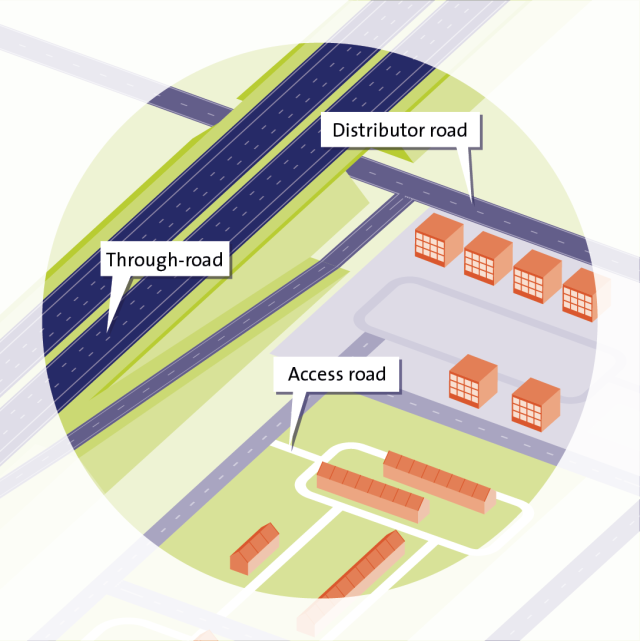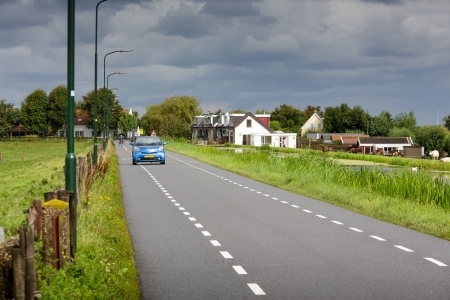Based on the functional network structure and the Sustainable Safety vision (see SWOV fact sheet Sustainably safe road traffic), the Netherlands has three main road categories (see the question How is the road network in the Netherlands structured?). Each road category has its own design principles and features:
Through-roads allow traffic to travel from origin to destination as quickly and safely as possible (“flow”). Car traffic has the highest priority. Through-roads may only be situated outside urban areas. These are either trunk roads or motorways.
Distributor roads connect through-roads with access roads. Traffic flows at road sections and exchange occurs at intersections. Distributor roads are found in both urban and rural areas. They are mainly 50-and 70 km/h roads in urban areas and 80 km/h roads in rural areas. Recently, a new type of distributor road has been proposed: a distributor road with a 30km/h limit. It concerns distributor roads that cannot be safely designed as 50km/h roads and/or have both a traffic function and residential function [1].
Access roads (ETW) offer direct access to residential areas at the locations of origin and destination. The residential function is most important and car traffic needs to adapt (in particular by travelling at low speeds). Access roads can be found in urban areas and in rural areas. It concerns 30 km/h roads and home zones (15 km/h) in urban areas and 60 km/h roads in rural areas.

Figure 1. Road categories.
